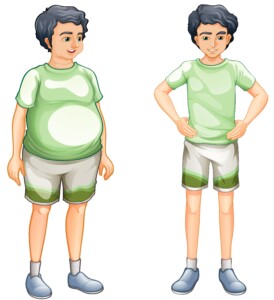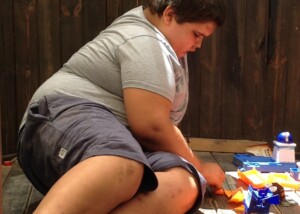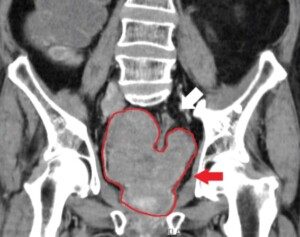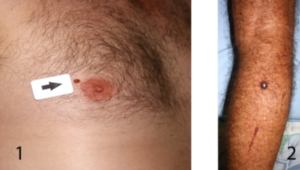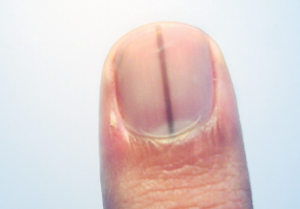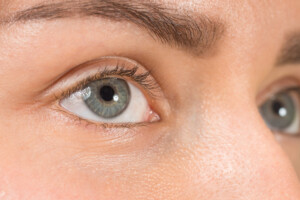Many severely autistic young men have a belly that’s disproportionately large when compared to their arms and legs.
Their arms and legs may be thin while the belly is distended, sticks out or is otherwise “big” or plump.
I’ve noted this phenomenon all my life, and it occurs quite prevalently, even in men in their 20s, who have autism.
Autism itself does not cause this body shape.
What causes it is the lifestyle that ensues because of the autism.
But this lifestyle isn’t a direct consequence of the autism; it’s generated by how that severely autistic individual is taken care of.
There’s a simple bodily explanation for this common situation in young men (and women) who have a more severe form of ASD.
Extremely Sedentary Lifestyle
The home life of those with very high support needs autism can be conducive to excessive sitting and very minimal physical activity.
It’s challenging to get someone with severe and especially profound autism to consistently engage in physical activity – and this includes the normal day-to-day body movements such as helping with household chores, yardwork and walking about town.
In many cases, the youngster with a severe or profound impact of autism – though able-bodied (no neurological or congenital disorder that affects motor control) — won’t even be standing to make a sandwich.
Things are brought to them such as even a cup of water. They lead a heavily stationary life.
This could be for more than one reason:
- Parents underestimate the child’s abilities.
- Parents don’t think it’s “worth it” to encourage any form of exercise.
- Parents feel it’d be “cruel” to “make” them do even simple household tasks, such as helping to bring in bags of groceries or carry a basket of laundry down a staircase.
- The child is in a foster care or orphanage environment where nobody cares enough to get them moving and instead just leaves them in a chair all day.
- Low expectations on the part of the parent or provider keep the autistic child/teen/adult in a chair for most of his day, and any walking that is done is only to get from point A to point B, nothing more.
This lifestyle banishes the muscles to minimal work. The muscles become weak, soft and flabby, due to massive underuse.
This, in turn, slows resting metabolism! Anyone in the fitness industry knows this fact.
Less Muscle = More Fat Accumulation
Personal trainers encourage clients, who want to lose weight, to increase their muscle mass through weight-bearing exercise (namely lifting weights).
A higher percentage of muscle (lean mass) raises resting metabolic rate (RMR).
When I was a personal trainer, many people at the gym asked how to get rid of the excess fat in their midsection.
These included people who seemed sincere and truthful when they said they had their food intake under control, but the abdominal fat lingered.
I believed them because they’d have relatively slender arms and legs, and carried most of their excess fat in their tummy. I’d put them on a strength training program to shrink their midsection.
Of course, the bodies of these gym members did not have the extent of incongruity that young autistic men (and especially older, plus women) often have.
There’d still be some semblance of muscle tone, simply due to the normal activities of daily living, and especially in those who regularly used the gym.
The gut is typically the first place to collect excess fat when there isn’t enough muscle to effectively burn calories.
Damn I can’t say this enough.
This is why competitive bodybuilders have such tiny waists and ridiculously flat abs. This isn’t from millions of crunches or sit-ups.
A strict diet is often credited, but the generous degree of muscle development keeps the fire burning, as muscle is the body’s most metabolically active tissue.
Muscle requires a lot of energy (calories) just to breathe, when compared to all other types of body tissue.
The lower your muscle mass, the slower your metabolism. It’s that simple.
There are outliers, though; we all know people who don’t exercise, eat a lot and remain thin.
However, have them pull up their shirt and you’ll likely see excess fat in their tummy. You may even see a potbelly with the shirt down.
In the case of autistic men with very substantial support needs, they have zero trained muscle and low muscle volume – due to their lifestyle.
This results in fat accumulation in the abdomen.
Excessive time in a chair, day after day, also results in poor posture, contributing to belly distension.
Solution to this Very Unfortunate, Highly Preventable Problem
Young people with Level 3 or any level autism need to be on their feet more and using their upper body more as well.
Issues with coordination or balance do NOT prevent physical activity or strength training; exercise simply needs to be modified to accommodate those issues.
I work one or two days a week as a direct care professional. Recently I took a young autistic woman to the park.
She is completely nonverbal and has an intellectual disability. But boy can she walk!
I don’t know where this verve comes from, as I’m not familiar with her upbringing.
She lives in a host home, and it’s possible that her provider takes her out regularly for lengthy fast walks. It could also be her nature.
The point, though, is that her severe autism doesn’t interfere with her ability to zip along a trail.
At the park I also saw, needless to say, young autistic men with slender or medium arms and legs and a disproportionately large belly. Needless to say, none were walking with a zip.
At the climbing gym I go to is a severely autistic, intellectually disabled and nonverbal man of 23 whose body is buff.
I asked his provider if he trained with weights. I was told yes, with supervision, on a regular basis.
Wow, my psychic abilities were really on that day!
Fruit Doesn’t Fall Far from the Tree
There are times I see the parents of autistic men whose bodies are poorly toned and very out of shape.
Needless to say … those parents’ bodies look as though they’ve never seen the light of a gym. Or any physical training module.
Those with very substantial support needs due to ASD should be given all the encouragement possible to be physically active.
• Doesn’t have to be fancy or complicated
• Lead by example; often, they will do whatever their parent does.
• Parents, GET MOVING! Take up hiking; bring your profoundly autistic child with you.
• Investigate exercise programs for special needs participants. They seem to be popping up everywhere.
• Hire a personal trainer. Not all parents are short on money, and this is often the assumption.
• The parents themselves could self-educate on fitness and working out, then apply their knew knowledge and enthusiasm to their autistic young/teen/adult child.
• Never assume it’s too late to make a difference. The only people who can’t benefit from exercise are dead.
Autistic people like routine and predictability, which is what a fitness program is based on!

